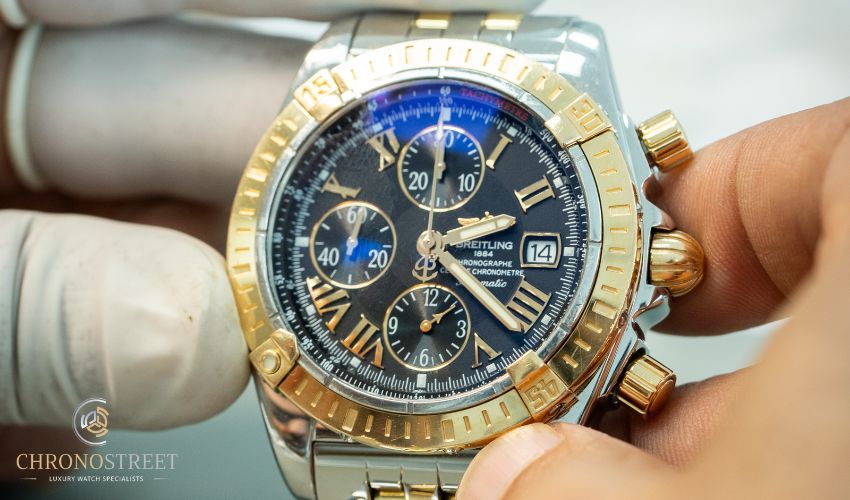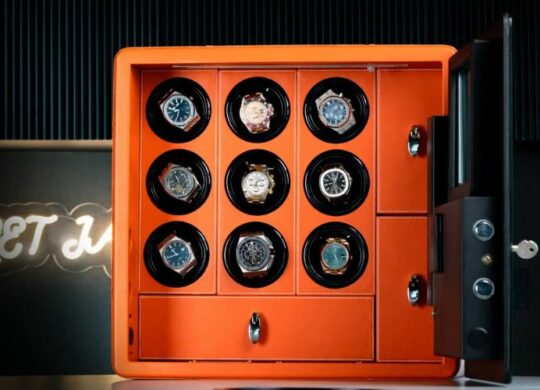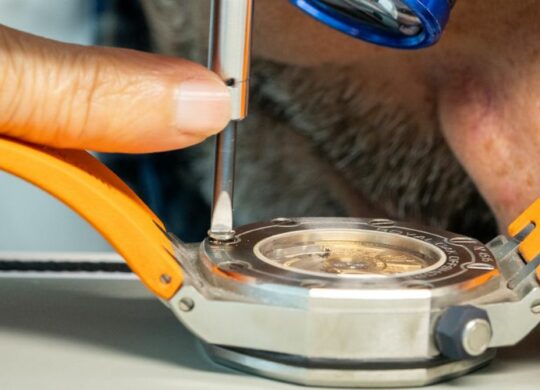What Goes Wrong if Moisture Gets Inside Your Watch?
There are several things that can go wrong if moisture manages to get inside your watch. Here’s a list of problems that might occur.
- Rust & Corrosion
- Fogging of the Crystal
- Movement Damage
Rust and Corrosion
The metal components inside your watch, such as gears, screws, and springs, can rust when exposed to moisture. Rust will not only affect the looks of these parts but also hamper their functionality. This might lead to inaccurate timekeeping or in some cases even complete watch failure.
In the case of quartz watches, the rust can still get on some of the exposed metal or even corrode the battery that is installed inside. While replacing a battery is considered an easy fix, there are chances that the whole movement might get damaged from the rust.
Fogging of the Crystal
One of the early signs of moisture is the fogging that can start to occur on the crystal of the watch. This will not only disturb the look of your watch but will also start damaging the dial, indexes and hands.
Movement Damage
If you do not take your watch to a watch technician soon enough, the moisture can start to mess with the lubricants inside the movement. This will lead to increased friction and wear on the moving parts. This can result in a shortened lifespan for your watch. Moreover, if the rust and corrosion takes over the entire movement, it will get nearly impossible to fix the movement.
How Moisture Can Get In?
My watch is waterproof yet the water got in, how? Well, there is a simple answer to this. Even though your watch is water resistant, there were certain things that you didn’t take care of. These things are as follows.
Damaged Seals and Gaskets
The seals and gaskets in a watch are designed to keep moisture out. However, over time, these can degrade, crack, or become misaligned, allowing water to enter the case. This is why we recommend regular watch servicing as it will ensure these types of things do not happen and your watch can last a lifetime.
Crown and Pushers
While seals and gaskets are not in your control, what is in your control is the crown and the pushers. Always ensure the crown is fully pushed in or screwed down before exposing your watch to water.
Case Back
The case back, especially if it is not properly tightened, can be another point of entry for moisture. Regularly check that the case back is secure and that the seals are intact.
Prevent Moisture Damage
You can always protect your watch from getting damaged due to moisture. You just need to do the following.
Regular Maintenance: Have your watch regularly serviced by a professional watchmaker.
Avoid Water Exposure: Even if your watch is labeled as water-resistant, avoid exposing it to water whenever possible.
Check Crown & Pushers: Always ensure the crown is fully pushed in or screwed down, even if you do not intend to take your watch anywhere near water.
Moisture still got in? Do this
If you suspect that moisture has somehow gotten inside your watch, it is always recommended to quickly take your watch to a trusted watchmaker. They can thoroughly inspect the watch and give it a quick service if needed.
By understanding the risks and taking preventive measures, you can protect your mechanical or quartz watch from the harmful effects of moisture. And the better care you take of your watch, the longer it will last you.





